

I don’t believe in empires. They don’t turn out well. They may last for a while – even a long while – but ultimately they collapse, and they don’t make most people’s lives much better in the process. Think Rome or the Ottoman Turks or the Spanish or the Brits. There are many reasons for the sad course of empires, but to me it’s about institutions.
We human beings organize themselves in one of two ways — as institutions or as associations. Institutions are usually big organizations that do big jobs where people get paid to do the work. Like governments and corporations. These institutions operate on protocols, make or sell lots of the same things, and need many customers or clients or constituents. Institutions run from the top down, which is why I think of them as triangles – the power of decision-making happens at the top, the rest of us follow the rules.
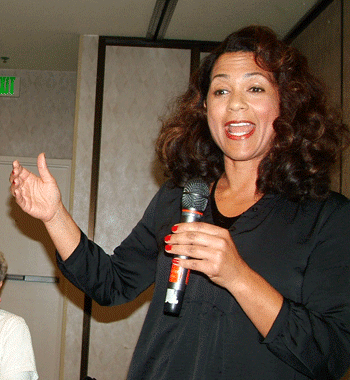
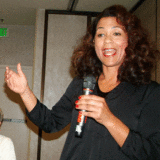
(This feature first appeared on L.A. Progressive. Reposted with author’s permission.)
Having captured the public’s rapt attention in just two short months but now facing increasingly well-coordinated and sometimes brutal police crackdowns, the Occupy Movement faces hard questions about its lasting impact. What will Occupy 2.0 look like, many want to know, and how will it get there?
If a meeting this past weekend between representatives from a half dozen Occupy encampments in California and perhaps 200 members of the California Progressive Caucus is any guide, the Occupy Movement has already enlisted several generations of progressive activists who are eager to support, leverage, and amplify the Occupiers’ ground-breaking work.
The meeting was, indeed, a kumbaya moment, one that suggests that the movement has embedded itself deeply into the progressive political psyche.
Recertification Battle
Gathering at the California Democratic Party’s Executive Board meeting this past weekend in Burlingame,
» Read more about: “Occupy” Occupies California’s Democratic Party »


Zombies have long provided both escapist fare as well as incisive social commentary. Romero’s Night of the Living Dead (1968) dealt with race relations in America, while his Dawn of the Dead (1978) addressed American consumerism. We’re currently going through another zombiessance, and while AMC’s The Walking Dead may not be Exhibit A, it may be the apotheosis of the current zombie moment. (Or at least it was in season one; don’t get me started on how disappointing this current season has been.)
The show examines how we (re-)build some semblance of a civilization in the wake of a horrifying event that has decimated the country. At its best, it’s filled with the tension that marks a bare struggle for survival; it never lets you forget that death (and worse) is ever-present.
In a recent episode (minor spoiler alert!),
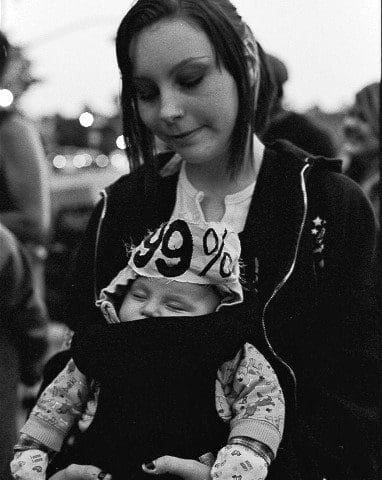

While the Frying Pan wholly endorses the goals and the ideals of the Occupy movement, there is considerable diversity of opinion here about how Occupy actually plays out on the streets, sidewalks and lawns across the country. Indeed, there’s quite a bit of diversity of opinion among supporters everywhere.
We worry that now — as cops in Oakland, Portland, Salt Lake City, and now New York move in on occupiers — the focus will shift from income inequality to the right to occupy. This is probably not a step forward for a movement which needs to think about its next steps as well as its end game.
Into this landscape comes a suggestion from Kalle Lasn, the founder of Adbusters and originator of the Occupy movement. He proposes that “it might be time for the protesters to “declare ‘victory’ ” and scale back the camps before winter sets in.”


First my boss at the suburban YMCA told me I was fired as a youth worker. Then he said he had been visited by a federal agent who told him I had an FBI file that was a file-drawer deep. It was 1968 Chicago, and the Democratic Convention was around the corner; parents were freaked that their teenagers would participate.
As good as Clint Eastwood’s new film, J. Edgar is, it neglects to portray the climate of fear that Hoover’s FBI historically created for ordinary American activists, particularly from the 1950s until his death in 1972. From visits to homes by suited men trying to “get information,” to intimations of “subversion” to employers, landlords and colleagues, the FBI wreaked havoc on the lives of thousands of law-abiding Americans in its single-minded campaign to weaken dissent within American society. As explained by Wikipedia,
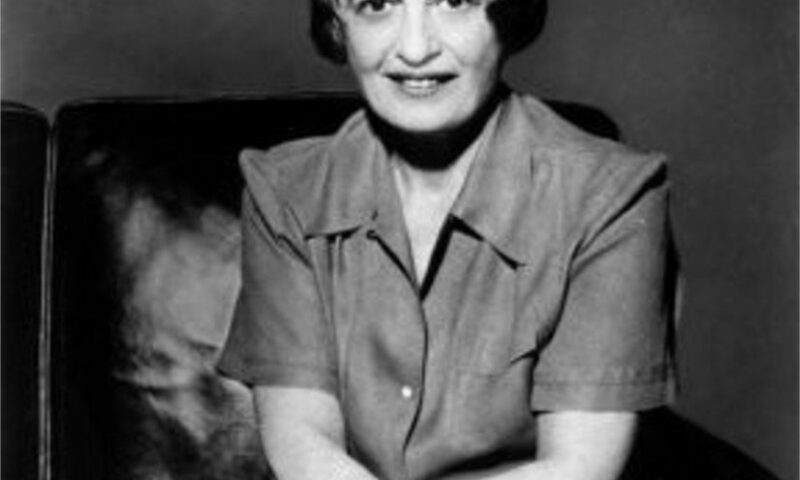

People in our apartment building don’t have to guess the shape of my and my wife’s politics. A weathered NO WAR sign stands in front of our doorway and on one wall there’s a flag with an image of planet Earth, taken from space, on a blue field that’s hung there since 9/11. Hard to miss. So I was taken aback when a three-page printout from an NPR interview was anonymously placed under our doormat. The interview was with a self-described “venture capitalist” and fellow at a libertarian think tank.
This promoter of Ayn Rand’s philosophy argued that it was venture capitalists like himself who create jobs, not government. Like most of Rand’s ideas this is about half right. Actually, in this case, a third right. Ernesto Sirolli, who has probably helped more depressed areas of the globe produce jobs than any community developer alive, says it takes three elements to start a business: someone passionate about a dream,


A lot of people are talking about leadership these days. Different types of leaders. The need for visionary leadership. The excitement around new young leadership and ideas about when leadership begins.
In my case, I’ve been thinking about how to recruit and develop new leaders for over 30 years, even when I was a new leader. I’m 51 years old and co-founded the Los Angeles Alliance for a New Economy (LAANE — the organization that sponsors this blog) in 1993; I have been the executive director ever since. I have recruited and developed hundreds of staff members for LAANE over the years, and many of these people have become some of the most inspirational leaders that I have ever known.
Which is why I have decided to step aside as LAANE’s executive director starting in February of next year.
» Read more about: The Long Goodbye: Why I’m Stepping Down But Not Going Away »
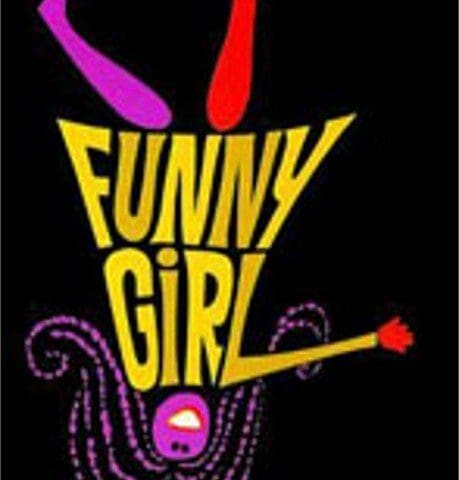

“Given the current economic climate,” read this afternoon’s press release from Funny Girl producer Bob Boyett, “many Broadway producing investors have found it impossible to maintain their standard level of financial commitment.”
In other words, the revival of the Jule Styne-Bob Merrill Broadway blockbuster that had starred Barbra Streisand in 1964, and gave us the song “People,” is dead — as far as Los Angeles is concerned. The new show, starring Six Feet Under‘s Lauren Ambrose as comedienne Fanny Brice, was to open in downtown L.A.’s Ahmanson Theater in January — the springboard to an April Broadway run.
Dream on, with this economy, though.
As the New York Times noted, “Pulling the plug on a previously announced Broadway production is rare, especially when (as in this case) theaters have been booked and actors cast.”
Michael Ritchie,
» Read more about: Breaking News: Economy Kills “Funny Girl” »
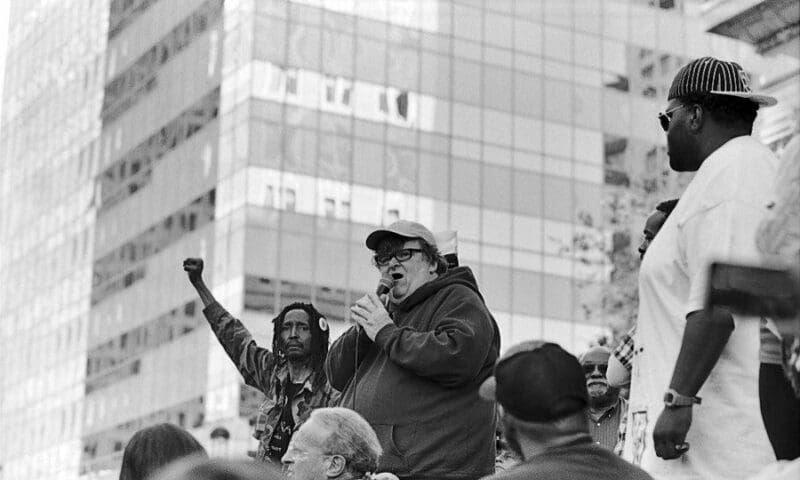

I have been photographing the Occupy camps since the inception of Occupy Los Angeles. I’ve spoken to many people and have thoroughly visited each layer of the emerging strata in the Occupy movement. I have seen it evolve.
On Day One it was as if the raucous levity of Venice Beach had been transplanted to Los Angeles City Hall. But within several days, the occupation had matured. People were tired. For even the most hardy, nights of sleeping on the ground in a not-so-private atmosphere and sharing a rancid pit toilet with hundreds of others is understandably wearing. What is this movement to become?
There is no mainstream media outlet objectively reporting the story. The pushing and pulling of the facts to fit readership deny the true story. Admittedly, I come from a bias of support for the movement. However, there can be no greater support for the movement than holding a great big mirror in the direction of its errant ways.
» Read more about: Are the Occupy Camps Reaching a Crossroad? »


What does the 1970s feminist art movement have to do with Occupy Wall Street? Quite a bit, I found out when I recently attended Still Doin’ It: Fanning the Flames of the Woman’s Building, an exhibit and performance experience at the Otis College of Art that was part of the Pacific Standard Time project. That kaleidoscopic endeavor, sponsored by the Getty Museum, looks at Los Angeles art from 1945-1980 and takes place in museums and venues across Southern California over the next 12 months.
The early participants of the Woman’s Building, including founder Sheila Levrant de Bretteville and performance artist and Otis professor Suzanne Lacy, described the motivation that drove them to that institution in 1973. At that time women artists and their work were largely ignored by the established arts institutions, and emerging women artists found few opportunities for support or mentorship of their art.


By now it’s obvious that Occupy Wall Street’s sophomore month is spawning a spin-off sideshow – a kind of reality TV moment in which conservative media apologists for the “one percent” alight from taxis and wade into crowds of protesters who are wearing hoodies and black bandanas. Into the belly of the collectivist beast, as it were. The pundits then vigorously articulate their grievances against the 20thCentury to the Occupiers and the merely curious who have gathered round.
The trail for these adventurers was blazed by Fox News eminence grise Geraldo Rivera, whose tumultuous forays into Ziccotti Park have made him a martyr to tax-paying “53 Percenters” from Montauk Point to Santa Clarita.
Last week Reason TV, an arm of the libertarian magazine Reason, produced a video in which radical free-marketeer Peter Schiff made a similar pilgrimage into the lion’s den.
» Read more about: Occupy America: The Right’s Newest Reality TV Show »


Named one of UTNE Reader’s “50 Visionaries Who Are Changing Our World,” Dave Zirin is among the few journalists who approach sports from a progressive perspective. He’s a prolific author and commentator, and his writing for The Nation offers a welcome respite from the drone mentality of mainstream sports coverage.
Most recently, Zirin has co-authored The John Carlos Story: The Sports Moment That Changed the World (Haymarket Books). The book revolves around Carlos’ black-gloved salute at the 1968 Mexico City Olympic Games, an historic moment executed in conjunction with gold-medal winner Tommie Smith. With Zirin joining Carlos on an extensive book tour, the Frying Pan caught up with Zirin by email to ask about his book and what it’s like to write about sports for The Nation.
Frying Pan (David Davis): Why do the upraised black-gloved fists of Carlos and Smith still resonate more than 40 years after the 1968 Mexico City Olympics?
» Read more about: Dave Zirin Interview: How Two Black Gloves Changed History »


I’ve recently found myself fascinated (and a little obsessed) with the lives of three superstar women who aren’t afraid to expose their weaknesses to a world that is only familiar with their strengths.
Gloria Steinem and Jane Fonda were each interviewed on TV in the same week that a DVD arrived from Netflix, Eleanor Roosevelt—An American Experience.
Of the many traits they have in common, the one that struck my interest was that they each developed such a late-career sense of self-esteem. Each acknowledged that she didn’t come into her personal comfort zones until she was in her 70s.
“Me too,” I kept mumbling, “me too.,”
Now in my 80s, I am convinced that these may be the most fulfilling years for some of us.
Each of these remarkable women speak about childhood wounds.
» Read more about: Reflective and Proactive in Our Senior Years »
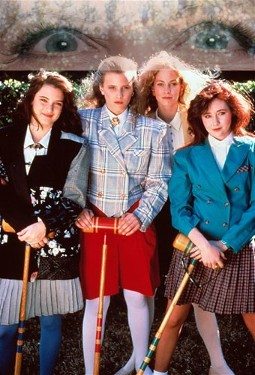

I recently received an invitation to my 10-year high school reunion, and let’s just say I have absolutely no intention of going. First of all, every day on Facebook is a high school reunion. But second, for me, as well as many others, high school was brutal. And for anyone who forgets that and is filled with a silly nostalgia for yesteryear, I encourage a viewing of the movie Heathers or even a recent episode of Glee – both of which are full of popularity contests, cliques, and the compulsion to “look good” at all costs. After high school, everyone tells you that the days of “trying to fit in” and being “cool” are over.
“The real world,” they say, “is about succeeding at college, getting a career, etc., and has nothing to do with being the captain of the football team.” But after my 10 years in this so-called “real world,”


What would cause 13 mostly 30- and 40-something electricians to come up with an event like the “Solidarity Sleepover” at Occupy LA? It all started with a text message. Howard Brown, adventurer, electrician and Occupy LA supporter wrote me, “would like 2 c mas union presence.” I had not been down to Occupy LA and before I put my name near it, I needed to do some recon to check it out. I had heard that it was this leaderless movement that really had no strong positions on anything because they could not get a consensus from the group. Being a lifelong Democrat, that sounded vaguely familiar. So down to City Hall I went with my good friend Gary in tow. I figured I needed some backup in case somebody tried to put a red Che Guevara beret on me when I wasn’t looking.
What Gary and I found instead were really cool,
» Read more about: What the Hell Is a Solidarity Sleepover? »
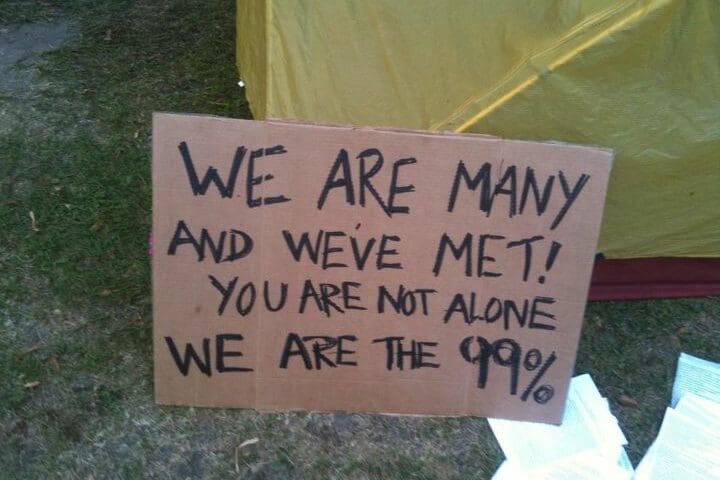
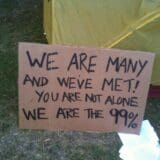
After visiting a few times, I decided to go for broke and join the occupation to see it all first hand. It was very interesting to entertain the misconceptions people might have about this movement. Some may think it’s populated by arrogant 20-somethings looking for attention and a party atmosphere with leftovers from Burning Man and Coachella attendees. Some may think it’s a few leftist apologists and homeless people intermingling uncomfortably. Some may think it’s a breeding ground for anti-American anarchists and communists plotting the takedown of our infrastructure. Others think it’s just a passing fad like pointy shoes and Bedazzler jackets.
I had some of these misconceptions myself. I didn’t know what to expect, but I had to reject these doubts before I could really see what was taking place. I visited during a Demands Committee meeting and the General Assembly, the nightly gathering for decision-making, to get a better reading of what was taking place.
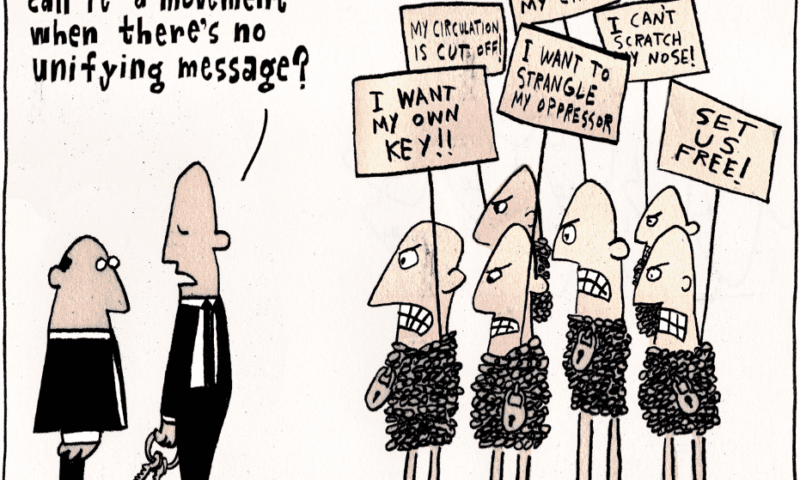
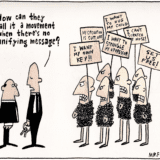


Last April, I went to visit my 25-year-old son, Armando, who lives in El Salvador. Armando – who is half Salvadoran – has been living in the capital, San Salvador, for the past two years, trying to make it as a freelance artist. When I got down there, I decided right away that I wanted to buy a car seat for cute, little three-year-old Alfonso (the son of Armando’s then-girlfriend), who was riding around in the car “freestyle” so to speak, with some pretty crazy Salvadoran drivers making me nervous.
Armando reassured me 10 ways to Sunday that he was a “careful” driver and that Salvadoran law did not require car seats for kids. Laws aside, I was determined to do the right thing and get a car seat so Alfonso could be a little safer.So began my week-long quest to find a car seat in a country where the decision to strap in your child is left to the “common sense” of the citizenry.
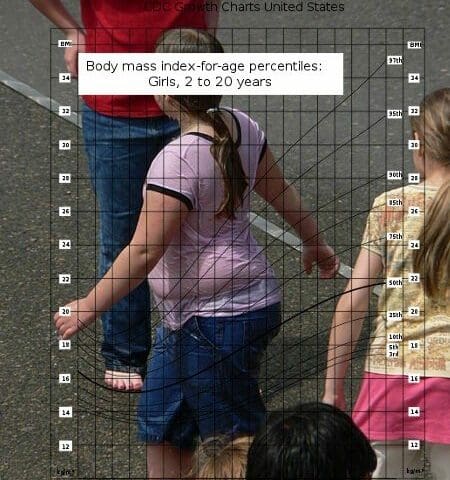

An apple a day and eating your peas led to good health, we once thought. Now, according to major food manufacturers, fruits and vegetables are “job killers” that will devastate the American economy.
In April of this year, the Federal Trade Commission, along with three other Federal agencies (FDA, CDC and USDA), released a set of proposed guidelines for marketing food to children to reduce sugars, fats and salts in the diets of American youth, and increase fruits, whole grains and vegetables. In 2008 Congress, led by Senators Sam Brownback (R-KS) and Tom Harkin (D-IA), asked for these recommendations to address the nations’ growing childhood obesity crisis.
A coalition of major manufacturers of processed foods (including Fruit Loops, Lucky Charms and SpaghettiOs), fast-food chains and the media industry that depends on their advertising dollars are spending millions on lobbyists to derail the proposed voluntary guidelines.
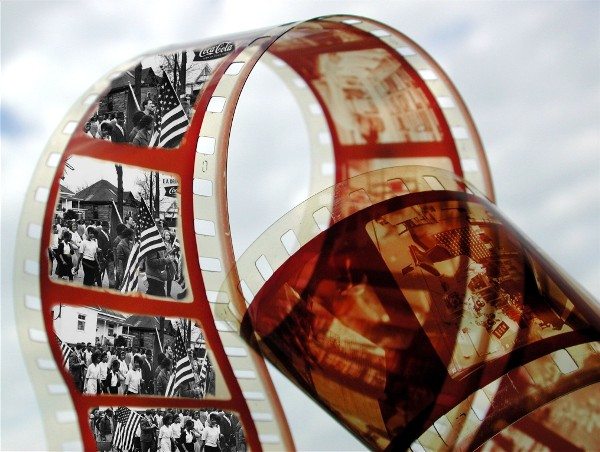

(Editor’s Note: Yesterday Peter Dreier compared this year’s breakout film, The Help, to an earlier but more accurate Hollywood portrayal of the civil rights movement. Today Vivian Rothstein, a veteran of the Mississippi Freedom Summer, weighs in with comparisons of her own.)
From watching the recent box-office hit, The Help, you’d think the women’s liberation movement had triumphed by 1963, when the film is set. In the story, white women appear to be the primary enforcers of racial segregation; it would also seem that white and black women, working without any organizational support, can profoundly change social conditions — and that white women make the top decisions in literary publishing houses. None of which was true back when I went South to work in the 1965 Mississippi Freedom Summer project.
Men are nearly invisible in the film – so is the Jim Crow power structure that allowed Southern white men to perpetuate unequal school districts,